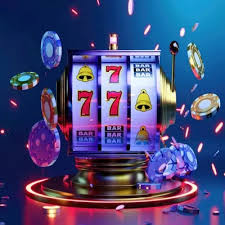
The Enigmatic World of LUCKY STAR
In the vast universe of anime and gaming, few titles hold the charm and appeal of LUCKY STAR. This delightful series has captured the hearts of fans around the world, blending humor, relatable character interactions, and cultural references into a unique package. If you’re keen on exploring the intricacies of this beloved franchise, you’ll find so much to uncover. LUCKY STAR More details await those curious enough to delve deeper into its nuances.
What is LUCKY STAR?
First and foremost, LUCKY STAR is a Japanese four-panel comic strip (yonkoma) manga created by Kagami Yoshimizu. Serialized from 2004 to 2007, it quickly transitioned into an anime, directed by Yutaka Yamamoto and produced by the renowned Kyoto Animation. Debuting in April 2007, the anime adaptation captured the essence of the manga while infusing it with vivid animation and a cheerful soundtrack. The premise revolves around the daily lives of four high school girls: Konata Izumi, Kagami Hiiragi, Tsukasa Hiiragi, and Miyuki Takara. Each character brings a unique flavor to the series, highlighting various aspects of Japan’s otaku culture.
The Main Characters
One of the standout features of LUCKY STAR is its characters, who are richly developed and resonate with various audiences. Let’s take a closer look at the four main girls:

- Konata Izumi: The star of the show, Konata is an avid gamer and anime fan, representative of the “otaku” culture. She’s known for her laid-back attitude and tendency to skip class to pursue her hobbies. Her love for pop culture often leads her to make obscure references that both amuse and confuse her friends.
- Kagami Hiiragi: The more serious and responsible member of the group, Kagami often finds herself at odds with Konata. Despite her tsundere personality, she has a caring side that she shows to her friends. Her competitive nature, especially in academics, adds an intriguing dynamic to her character.
- Tsukasa Hiiragi: Kagami’s younger twin sister, Tsukasa is less assertive and often portrayed as the cute, airheaded girl of the group. Her innocence and simple-mindedness create humorous situations, especially when contrasted with her sister’s brusque demeanor.
- Miyuki Takara: The quintessential “smart girl”, Miyuki is kind-hearted and gentle, often serving as the voice of reason within the group. Her extensive knowledge and polite demeanor are a charming contrast to the more carefree personalities of Konata and her friends.
Cultural References and Humor
One of the primary appeals of LUCKY STAR is its frequent references to Japanese pop culture, including video games, anime, and other media. The show not only entertains but also educates viewers on various aspects of otaku culture. It successfully merges slice-of-life storytelling with comedic banter, making it relatable to a wide audience, irrespective of their familiarity with Japanese culture.
The clever use of parody, especially when talking about tropes commonly found in anime, serves to engage viewers and invite them to laugh at the absurdities and quirks of the genre. This self-referential style adds layers to the humor, which often involves intricate wordplay that can sometimes be lost in translation.
The Animation Style
The animation quality in LUCKY STAR is both charming and distinctive. Kyoto Animation, known for its high production values, ensured that the visuals captured the essence of the characters and their lively personalities. The character designs are cute and memorable, with vibrant colors that enhance the overall viewing experience. The art style complements the lighthearted nature of the show, providing a feast for the eyes while maintaining focus on the dialogue-driven story.

The Impact of LUCKY STAR
Since its inception, LUCKY STAR has left an indelible mark on both anime culture and the broader gaming community. Its influence is evident in subsequent works, especially in series that strive to blend humor with everyday life experiences. The franchise has inspired countless memes, merchandise, and even fan art, showcasing the extensive love for the characters and their antics.
Moreover, LUCKY STAR has contributed to the normalization of otaku culture. It’s a series that celebrates fandom, making it a beacon for fans who often feel marginalized or misunderstood. By portraying characters who embrace their interests passionately, it encourages viewers to find joy in their pursuits, no matter how niche.
In Conclusion
LUCKY STAR is more than just a slice-of-life anime; it’s a cultural phenomenon that resonates with many. Through its relatable characters, clever humor, and vibrant animation, it serves as a reminder of the beauty in everyday life and the joy of being oneself. Whether you’re a seasoned anime fan or new to the genre, LUCKY STAR offers something for everyone — a gateway into the delightful world of otaku culture.
As you explore the charming universe of LUCKY STAR, remember that it’s not just about the laughter and fun — it’s about celebrating the friendships and experiences that enrich our lives. So, grab some snacks, sit back, and immerse yourself in the jubilant escapades of Konata and her friends!
0 Comments